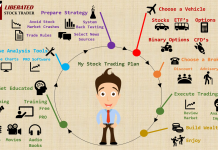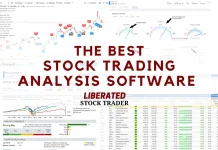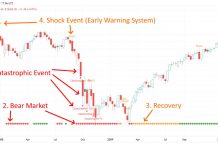Take your very first Liberated Stock Trader PRO lesson!
Here is your opportunity to take the first lesson of the Liberated Stock Trader PRO Training Course.
This lesson helps you get grounded on stock market terminology and helps you understand the difference between technical analysis (charts) and fundamental analysis (company accounts and valuation).
The Lesson also covers Dow Theory and Economic Theory. We hope you enjoy the lesson and that it gives you a good example of the Pro Training Course.
Video From The Liberated Stock Trader Pro Masterclass Course
Video From The Liberated Stock Trader Pro Masterclass Course
Other Chapters of the Liberated Stock Trader Book are listed below
Chapter 1 – Essential Stock Market Knowledge – Fundamentals
This chapter sets the stage for the two key areas of stock market technical analysis and the fundamental analysis of companies including macro and microeconomics
Chapter 2 – What Really Moves Markets - Why do Booms and Busts Occur?
This chapter looks at what REALLY makes the markets move, what causes boom and bust cycles, and how to spot them.
What are stock market cycles and the cycles of business and economies? Important information that you need to appreciate as part of your core analysis.
Chapter 4 – Is the Company in great shape – P/E Ratio
Next we move into fundamental analysis and the financial fitness of a company. All the major indicators and measures are covered.
Chapter 5 – How to find the best stocks
Stock screening means using criteria to shortlist the kind of stock that you want to purchase. A vital part of any stock market training
Chapter 6 – Chart Reading made easy - Japanese Candlesticks – Bullish Reversal Patterns
Once you know the business climate, the state of the economy and you have shortlisted the stocks you want to buy. The next thing to do is the technical analysis. Even if the company looks great on paper, if the stock price is plummeting you do not want to buy it until it has bottomed out. This is called catching a falling knife. This is what chart patterns and technical analysis help with.
Chapter 7 – Trend Lines and Price Patterns - How to draw trend lines
Here we get into the art of drawing on charts to help you visualize the Supply and Demand on the stock, the direction of the trend, and estimate how long the trend will last. Vital for you to establish buy and sell signals.
Chapter 8 – Chart Indicators are your friends! – ROC Rate of Change Indicator
Which indicators should you use, there are literally hundreds of stock chart indicators? Each has a specific use case and application, which should you use?
Chapter 9 – Chart Indicators Volume - The Price Volume Relationship
Volume is a vital indicator along with the price. Both of these you need to understand in granular detail, you will learn everything you need to know.
Chapter 10 - Advanced Stock Charting Techniques Parabolic SAR
Moving to advanced technical analysis we cover indicators such as parabolic SAR and point & figure charts.
Chapter 11 - Sentiment Indicators & Trading the News - How to trade the news
How are the market participants feeling? Positive, Negative, or indifferent. Consider that 90% of people fail to beat the average market returns, sentiment indicators can be a great contrary indicator. Learn how to use them to your advantage.
Chapter 12 - Trading Strategy - What type Of Investor are you?
Understanding how you want to invest, how much time you have, and your time horizon. These questions all help you to understand what type of investor you want to be, this then enables you to select the right strategy for you. Then we move on to building your stock investing system, a critical element to your plan.


















